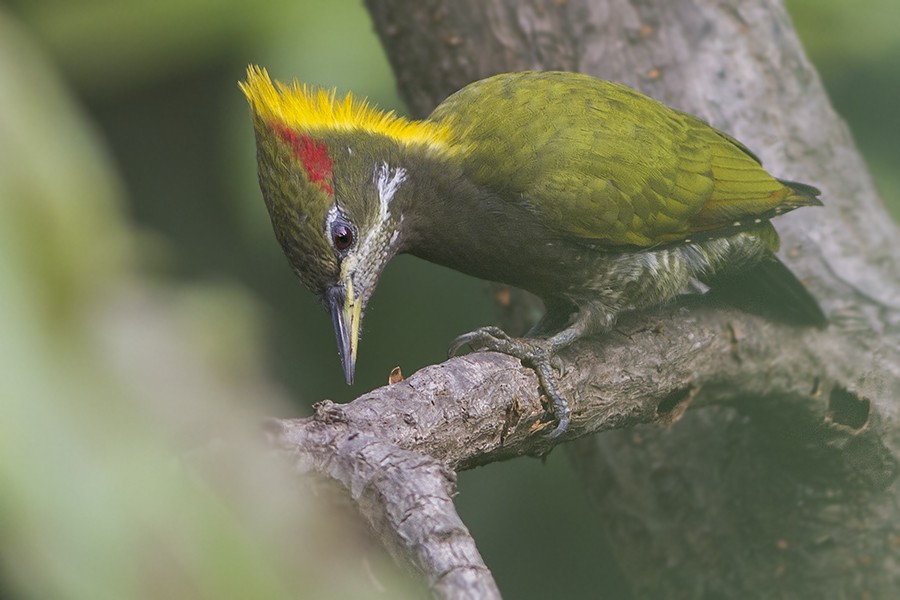Lesser Yellownape
A species of Eurasian Green Woodpeckers and Allies, Also known as False Yellownape Scientific name : Picus chlorolophus Genus : Eurasian Green Woodpeckers and Allies
Lesser Yellownape, A species of Eurasian Green Woodpeckers and Allies
Also known as:
False Yellownape
Botanical name: Picus chlorolophus
Genus: Eurasian Green Woodpeckers and Allies
Content
Description General Info
 Photo By Dibyendu Ash , used under CC-BY-SA-3.0 /Cropped and compressed from original
Photo By Dibyendu Ash , used under CC-BY-SA-3.0 /Cropped and compressed from original Description
The lesser yellownape is a largish species at 27 cm in length. It has a typical woodpecker shape. The upperparts are green apart from the bright yellow tufted nape. The neck and breast are green and the belly is whitish, finely barred with green. The rump and tail are blackish. The adult male lesser yellownape has a green head with a white throat. He has red markings above the eye and above the nape, and red moustachial stripes. Females have only a red patch above the ear coverts. Young birds are like the female, but duller. The subspecies occurring in peninsular India has a greyer head. 
Size
28 cm
Nest Placement
Cavity
Feeding Habits
Lesser Yellownape consumes ants, beetles and their larvae, other insects, berries, and nectar. It forages in varied places, from small trees to ground level, often joining mixed-species flocks. Their foraging technique includes gleaning, probing, and occasionally excavating, with a preference for ants' arboreal nests and probing flowers.
Habitat
The habitat of lesser Yellownape encompasses a variety of forested environments, ranging from evergreen and moist deciduous forests to dry forests. These birds are also found in woodlands, bamboo groves, scrublands, and well-wooded landscapes, including plantations and gardens. They predominantly occupy regions with diverse habitats, often in areas with no competing species of the same genus.
Dite type
Insectivorous
General Info
Feeding Habits
Bird food type
Species Status
Not globally threatened.